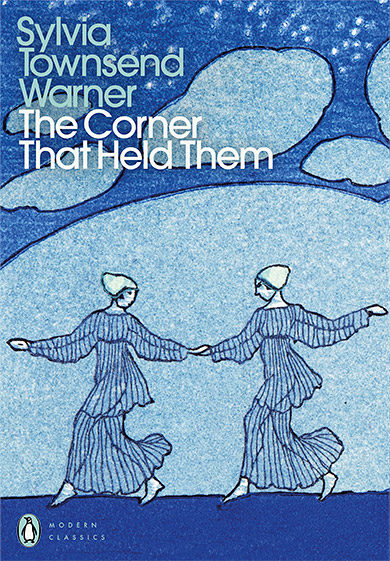For a full bibliography compiled by Janet Montefiore, download the PDF here.
Monographs
Frances Bingham, Valentine Ackland: A Transgressive Life (Bath: Handheld Press, 2021)
Ailsa Granne, Women Writing for Women: Life-Writing, Genre and Criticism in the Texts of Sylvia Townsend Warner and Valentine Ackland (London: Routledge, 2020).
Claire Harman, Sylvia Townsend Warner: A Biography (London: Chatto & Windus, 1990).
Wendy Mulford, This Narrow Place: Sylvia Townsend Warner & Valentine Ackland: Life, Letters and Politics 1930-1951 (London: Pandora Press, 1988).
Judith Stinton, Chaldon Herring: Writers in a Dorset Landscape (Norwich: Black Dog Books, 2004). Discusses Sylvia Townsend Warner, Valentine Ackland and their relationships with the Powys family, Alyse Gregory, and others.
See also
Janet Montefiore, Men and Women Writers of the 1930s: The Dangerous Flood of History (London: Routledge, 1996). Discusses Sylvia Townsend Warner’s poetry and her historical novels Summer Will Show and After the Death of Don Juan .
Gay Wachman, Lesbian Empire: Radical Cross-Writing in the Twenties (New Brunswick, NJ: Rutgers University Press, 2001). Discusses Lolly Willowes , Mr Fortune’s Maggot and selected short stories.
Essay collections
Gill Davies, David Malcolm, John Simons eds. Critical Essays on Sylvia Townsend Warner, English Novelist 1893-1978 (Lampeter: Edwin Mellon Press, 2006).
Journal Special Issues
Alex Murray and Vike Plock, eds., Revisiting Sylvia Townsend Warner , Special Issue of Literature Compass 11:12 (2014).
Articles and chapters in books
Gillian Beer, ‘Sylvia Townsend Warner: The Centrifugal Kick’ in Maroula Jouannou, ed., Women Writers of the 1930s (Edinburgh: Edinburgh UP, 1999).
Glen Cavaliero, ‘A Rational Romantic: The Importance of Being Sylvia’, Journal of the Sylvia Townsend Warner Society (2013).
____________ Foreword to Ray Russell, Sylvia Townsend Warner: A Bibliography (Leyburn, Yorkshire: Tartarus Press, 2020).
Terry Castle, ‘Sylvia Townsend Warner and the Counterplot of Lesbian Fiction’, The Apparitional Lesbian: Female Homosexuality and Modern Culture (New York: Columbia UP, 1993).
Maud Ellmann, ‘The Art of Bi-Location: Sylvia Townsend Warner’, Maroula Joannou, ed., The History of British Women’s Writing, 1920-1945 (London: Palgrave, 2013).
Jane Garrity, “Encoding bi-location: Sylvia Townsend Warner and the primitive erotics of sapphic dissimulation,” Step-daughters of England: British Women Modernists and the National Imaginary (Manchester and NY: Manchester UP, 2003), 140-187.
_____________‘Vaccies Go Home: Evacuation, Psychoanalysis and Fiction in World War II,’ Oxford Literary Review 38:2 (2016).
Mary Jacobs, ‘The Politics of Disclosure and the Fable’, Journal of the Sylvia Townsend Warner Society (2006).
______________ ‘Trees and Dreams: Sylvia Townsend Warner, the Pastoral, and Fantastic Realism,’ Journal of the Sylvia Townsend Warner Society (2011).
Janet Montefiore, ‘Listening to Minna: Realism, Feminism and the Politics of Reading’, Suzanne Raitt, ed., Volcanoes and Pearl-Divers: Essays in Lesbian Feminist Studies (London: Onlywomen Press, 1994).
_____________‘Sylvia Townsend Warner and the Biographer’s “Moral Sense”’, Arguments of Heart and Mind: Selected Essays 1978-2000 (Manchester: Manchester UP, 2002).
Peter Swaab, ‘The Queerness of Lolly Willowes’, Journal of the Sylvia Townsend Warner Society (2010).
_________ ‘Sylvia’s Similes: A Stylistic Approach to Sylvia Townsend Warner’ in Literature Compass 11:12 (2014).
Kate Macdonald, ‘Witchcraft and non-conformity in Sylvia Townsend Warner’s Lolly Willowes (1926) and John Buchan’s Witch Wood (1927)’, Journal of the Fantastic in the Arts 23:2 (2012), 215-238.
